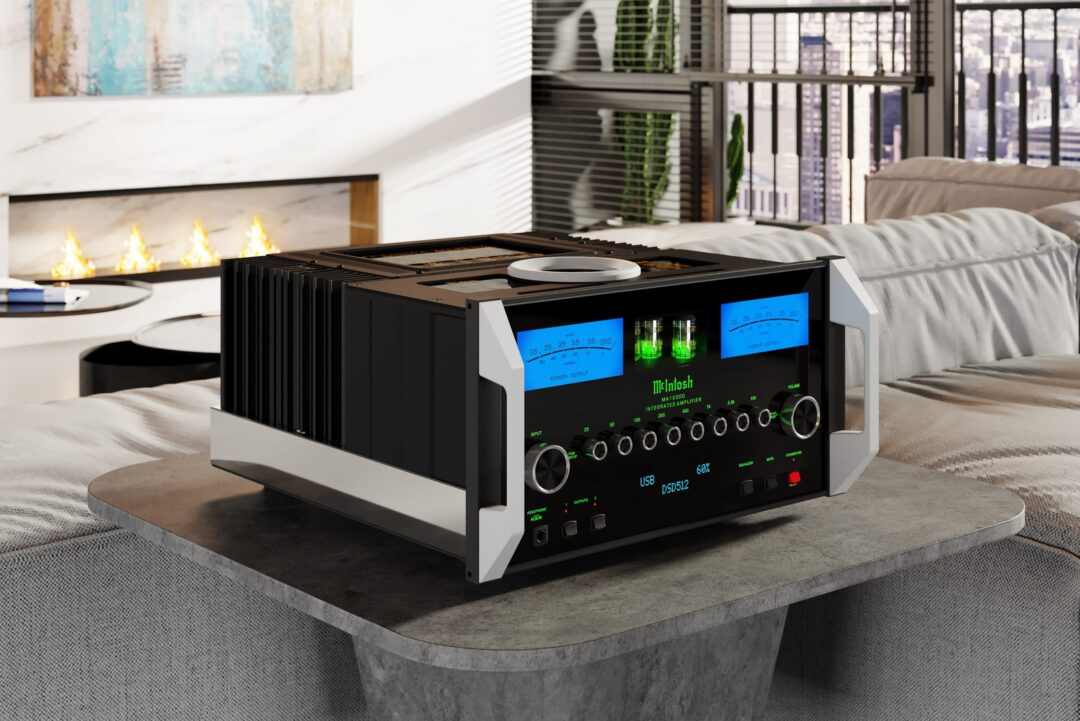I thought I knew what I was going for. First a physical effort, as always with McIntosh amplifiers, followed by a fast-paced and engaging break-in period. So I had learned after years of easing and testing McIntosh products.
But this time I was not prepared.
That is, with a weight close to 50 kilos, the MA12000 definitely lives up to the concept of heavy hi-fi, but the sound from the amplifier immediately differed from e.g. and MA9000. Which has been the flagship of the integrated McIntosh amplifiers. Not anymore.
The even larger, even heavier and even more powerful MA12000, is basically quite similar to both the 9000 and the other integrated amplifiers from McIntosh. But it stands out by being a hybrid construction. Autoformers – large transformers – and solid state output transistors, combined with vacuum valves in the preamplifier stage.
It is not very common to combine valves and transistors in an integrated amplifier, but the idea is not new either. Japanese Luxman did it in the 80’s, with the integrated LV series, and they even produced CD players with valves! McIntosh are about the only ones that today combine valves and transistors, in MA252 and 352, and now also in the flagship MA12000.
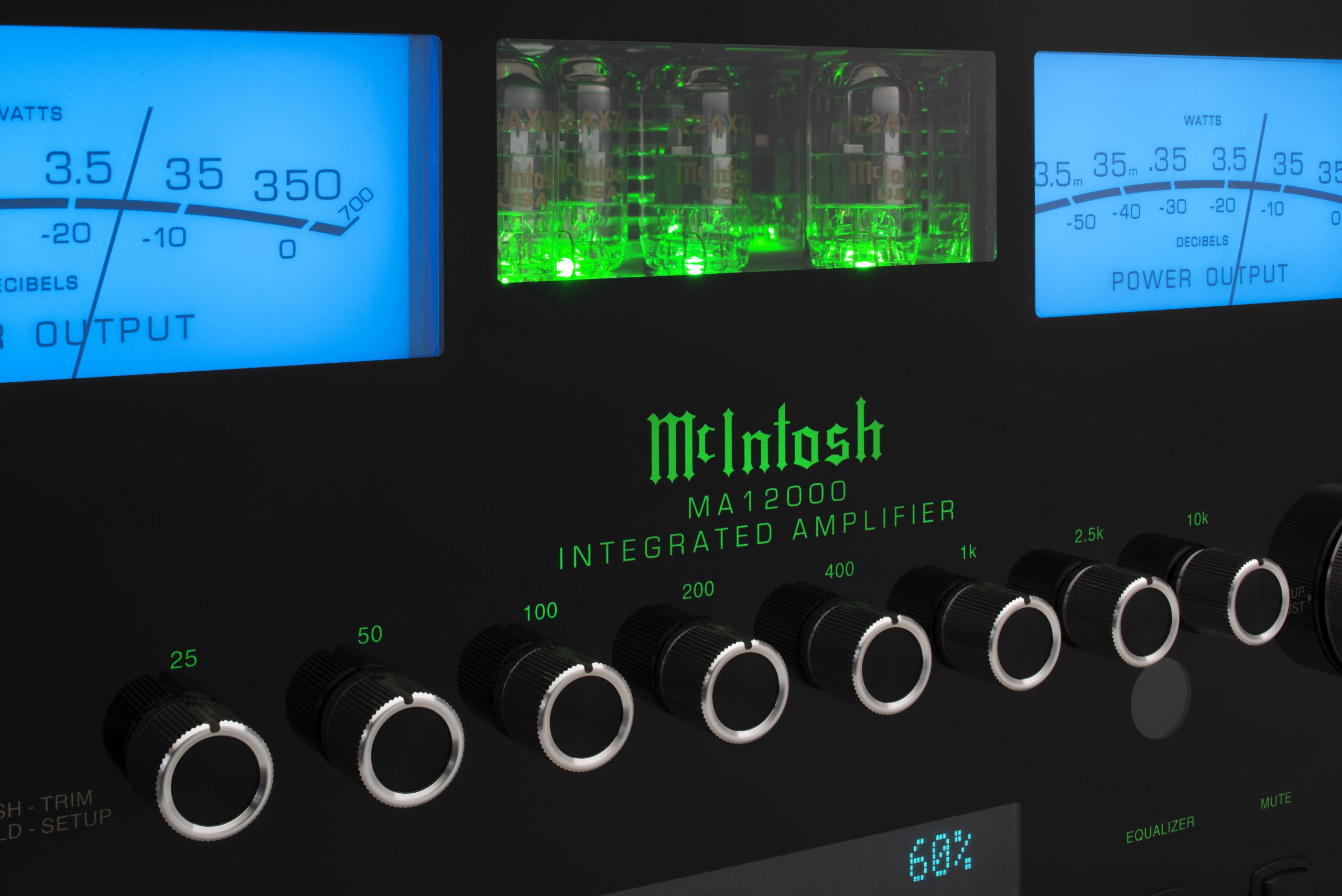
The McIntosh amplifier thus uses the same principle, but is a powerful 350 W monster of an amplifier. With a new DAC module, a hysterically good phono input, and a total of 17 inputs.
Overkill for most of us, but no lack of flexibility here.
Once you have eased the monster into place, which is a two-man lift, you can not help but notice all the lights, which are so typical McIntosh. They can be dimmed, even the lights in the small window in front, which makes an MA12000 so unique.
Valves
The amplifier’s four 12AX7A valves are visible through a small window between the power meters. The valves are located in the preamplifier section, and you can see the topography of the amplifier circuit on the lid. The two inputs for turntable, one for MM and one for MC cartidges, are two of the total of 17 inputs. Which also consists of six unbalanced and two balanced line inputs.
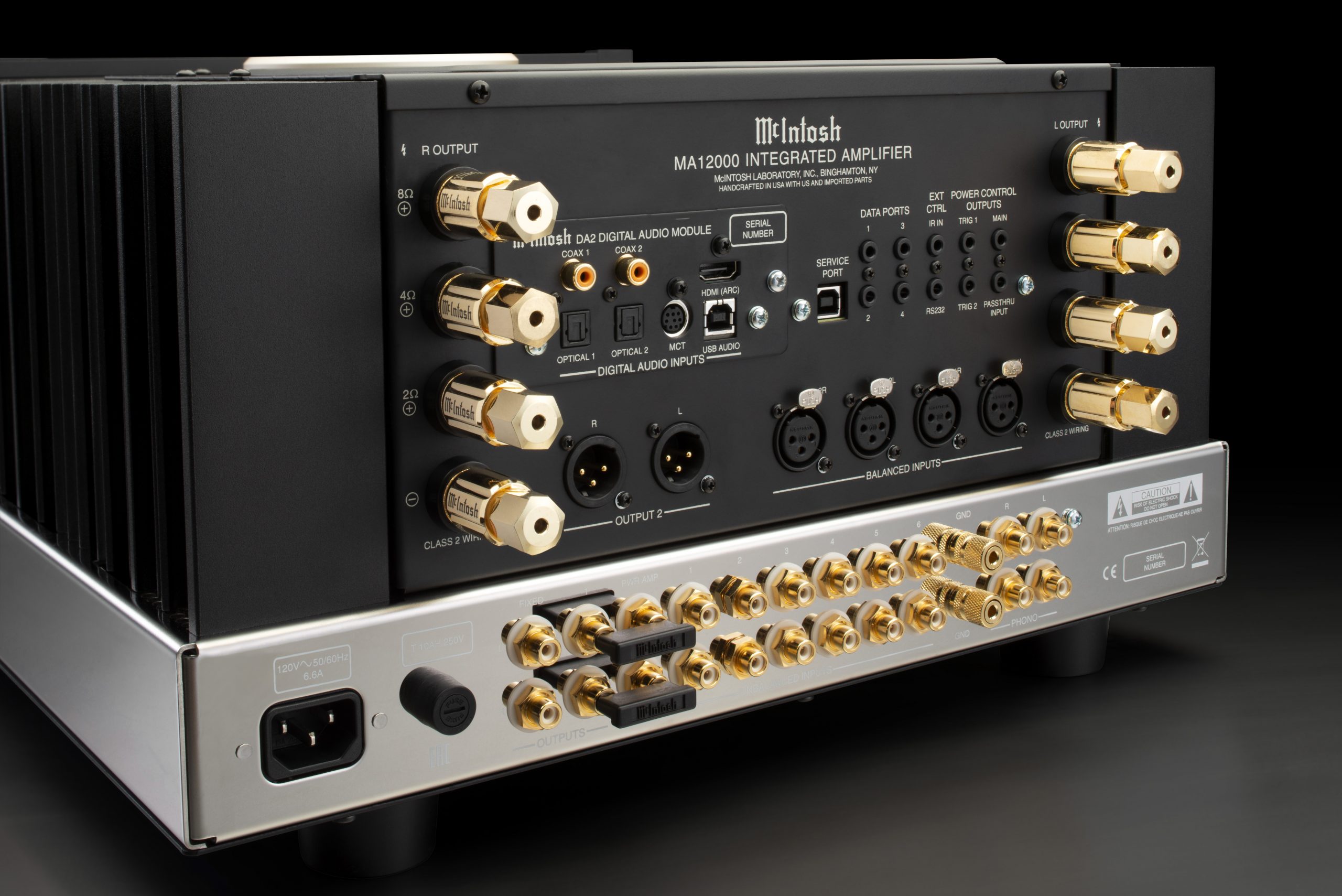
New DAC module
The new DA2 digital module is the same as in the C2700 preamplifier, and is an upgraded version of the 32-bit converter that is located in the DA1 module on the back of an MA9000. What’s new in DA2 is support for DSD512 and an HDMI input with audio return, for connection to TV. There is even lip sync adjustment on the HDMI input.
The DA2 module on the MA12000 and C2700 also has two coaxial and two optical inputs that support up to 24-bit/192kHz files, and a USB input with support for 32-bit/384 kHz. The module also has the special DIN connector called MCT, which provides digital connection of SACD playback from McIntosh SACD players with MCT output.
The DAC naturally has Roon support. So that one can stream the music and control the music library in Tidal or Qobuz, with a Roon client.
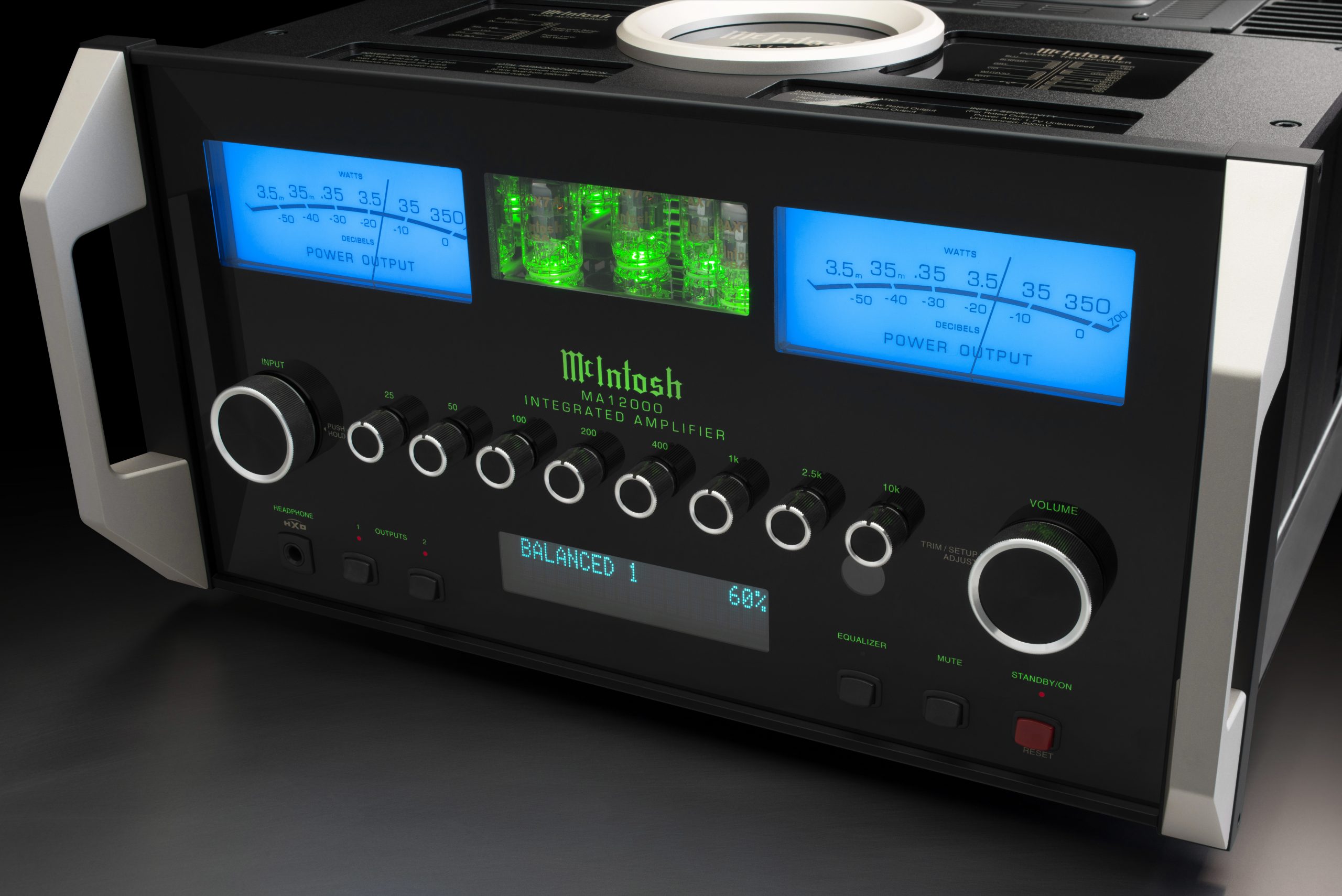
An eight-band equalizer from 25 Hz to 10 kHz, forms a string of pearls between the input selector and the volume control. The latter two can also be used to enter the on-screen menu, where you can make settings, such as changing the Input Sensitivity, renaming the inputs, and adjusting the load on MM and MC pickups. Impedance load can be set to, 50, 100, 200, 400 or 1000 ohms, on the MC input, and capacitance for MM from 50 to 400 pF.
As you can see from the pictures, the amplifier also has a headphone output, with a small logo above. It’s McIntosh Headphone Crossfeed Director (HXD), which will create the feeling of listening to speakers in a room, even if you have headphones on.
Fully balanced with autoformers
Apart from the valves, the MA12000 is built quite similarly to an MA9000 or MA7200. The amplifier is fully balanced with McIntosh’s well-known autoformers on the outputs. Which has separate windings and outputs for 2, 4 and 8 ohm speakers.
This principle is quite unusual on an amplifier with transistors in the output stage, and something you mostly only find on valve amplifiers. But McIntosh insists on using transformers on the outputs of its more expensive amplifiers, because it makes the output step completely insensitive to varying speaker load, and unwanted feedback from the speakers.
It is also equipped with the McIntosh Sentry Monitor, which disconnects the outputs if the amplifier is in danger of a short circuit, and has Power Guard, which monitors the signal in real time to avoid clipping that could damage the speakers.
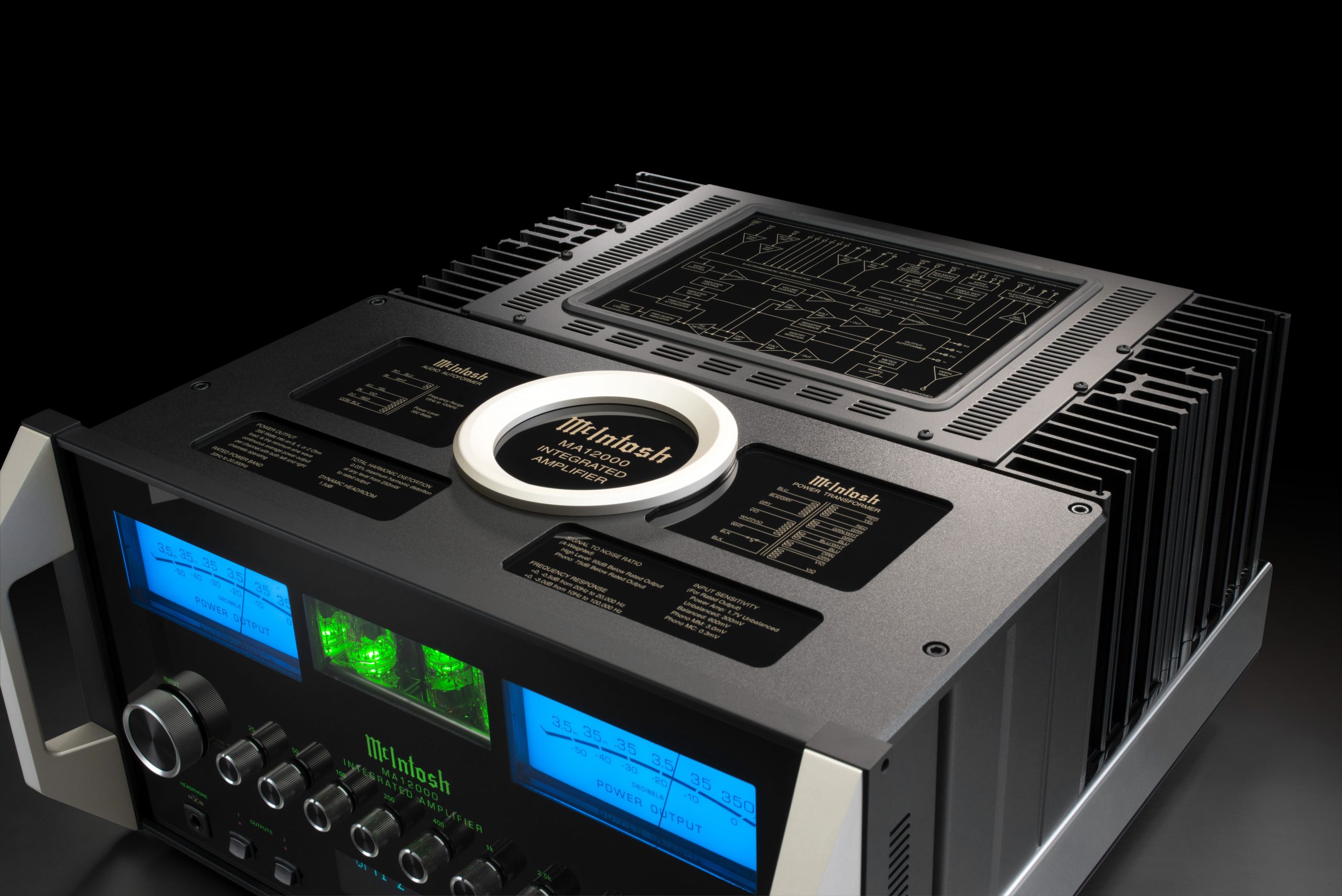
Tough and refined
Since the amplifier uses valves in combination with transistors, the noise floor is slightly higher than on an MA9000. But you do not notice anything. Not even at the MC input, where it is quiet as in the grave.
But what you really notice is the insane control the amplifier has over the speakers. The large JBL 4367 is not exactly heavy-duty, but it requires both muscle and control to control two 15-inch woofers, and the MA12000 does so with the same authority as the power amplifier MC312.
It is natural to compare with the MA9000, as if you look at it soberly, it is an amplifier that can not lie about its relationship with the former, and which plays fantastically. It uses the previous generation DA1 DAC module (but can be upgraded to DA2), and has the same number of inputs, but costs considerably less. In that sense, it is a better buy.
So what do you get in MA12000 that MA9000 does not have? The new amplifier has, if possible, even better grip, perhaps most noticeable in the bass when you play really loud, and the music has a slightly warmer sound. Vowels sound a little – emphasize a little – fuller. The tapping on strings e.g. double bass, ‘slams’ more in the room, and and there is better depth in the soundscape.
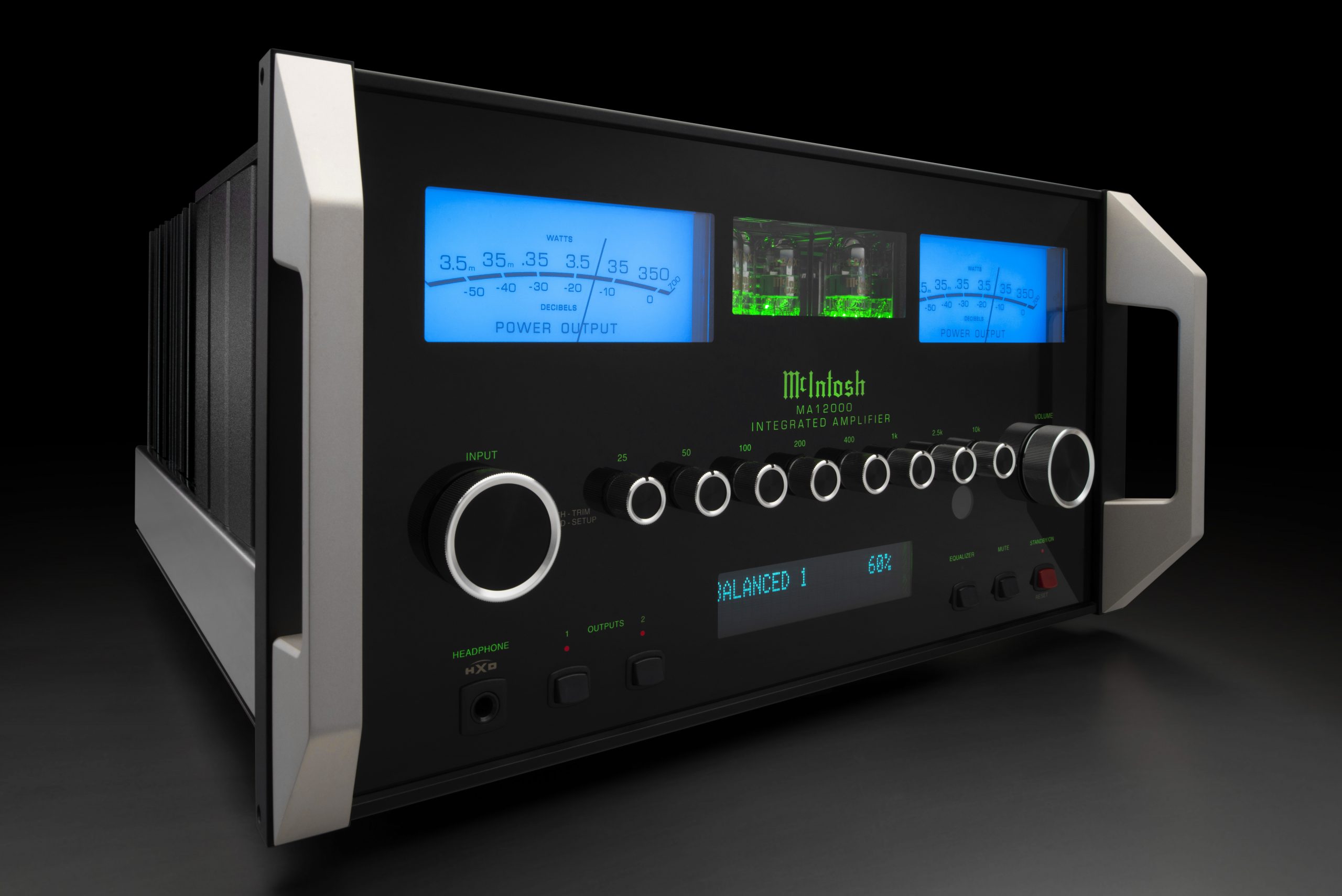
I will not say that the new amplifier is insanely much better than the old one, that would be a significant exaggeration. As mentioned, you hear that they are related. But there is something about the way the music sounds that captivated me the most. Whether this can be attributed to the valves, or not, I will be careful to be too definitive about. But acoustic guitars, strings, vocals, cymbals and brass, among others, are reproduced with just a little more sparkle.
For example, piano tones sound clearer and there is more depth in the sound, which is very reminiscent of the combination McIntosh C2700 and MC312. A combination that costs about the same, but takes up twice as much space.
Conclusion
History is filled with powerful, integrated amplifiers. Krell FBI, Musical Fidelity M6 si500, Gryphon Diablo 300, and more from McIntosh. I would argue that the MA12000 is the most usable of them all. With a total of 17 inputs, DAC, MM and MC input, pre-out and 350 W power available, this McIntosh amplifier is extremely flexible. It is more than powerful enough, and plays so wonderfully great, that even die-hard audiophiles could be cured from the upgrade disease.
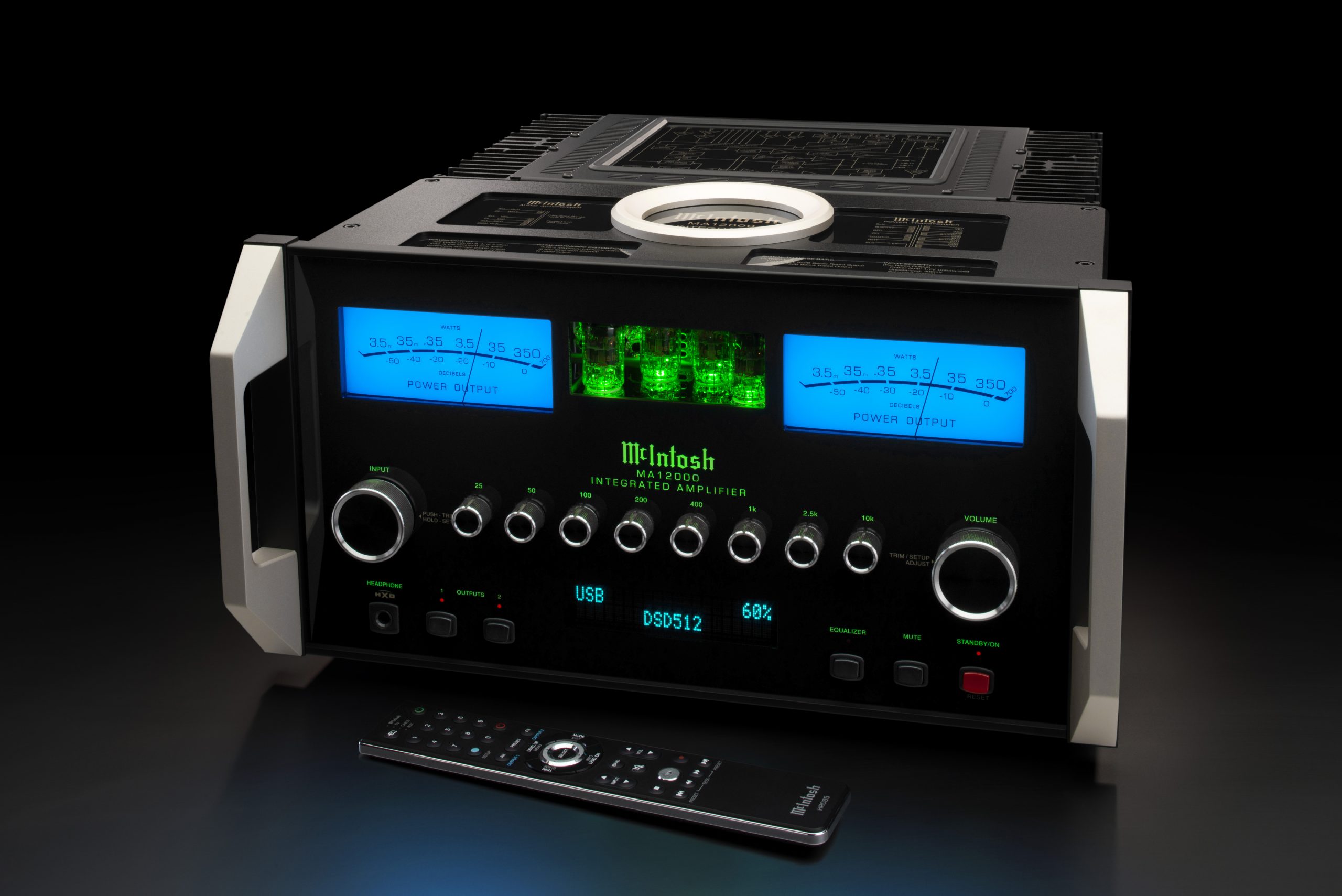

We think
Near fully equipped integrated, with a sound image that hits you on the ground. Fantastically engaging and brutally powerful. The pipes literally make the music glow. Takes up a lot of space. The price is also quite substantial.
17000 €
Specifications
- Type: Integrated amplifier
- Technology: Transistor, valves, autoformers
- Connections: 6 unbalanced RCA, 2 balanced XLR
- Turntable input: MM and MC input
- Headphone output: Yes
- DAC: 32-bit / 384 kHz, eight-channel PCM / DSD
- DAC connections: HDMI ARC, 2 x optical, 2 x coaxial, MCT, USB
- Power: 2 x 350 W @ 8, 4, 2 ohms
- Frequency range: -3 dB, 10Hz – 100 kHz
- Dynamics: 1.5 dB headroom
- THD: 0.005%
- Signal/noise: 114 dB unbalanced
- Dimensions and weight: 44.45 x 24 x 50.2 cm / 48.9 kg
- Web: mcintoshlabs.com
